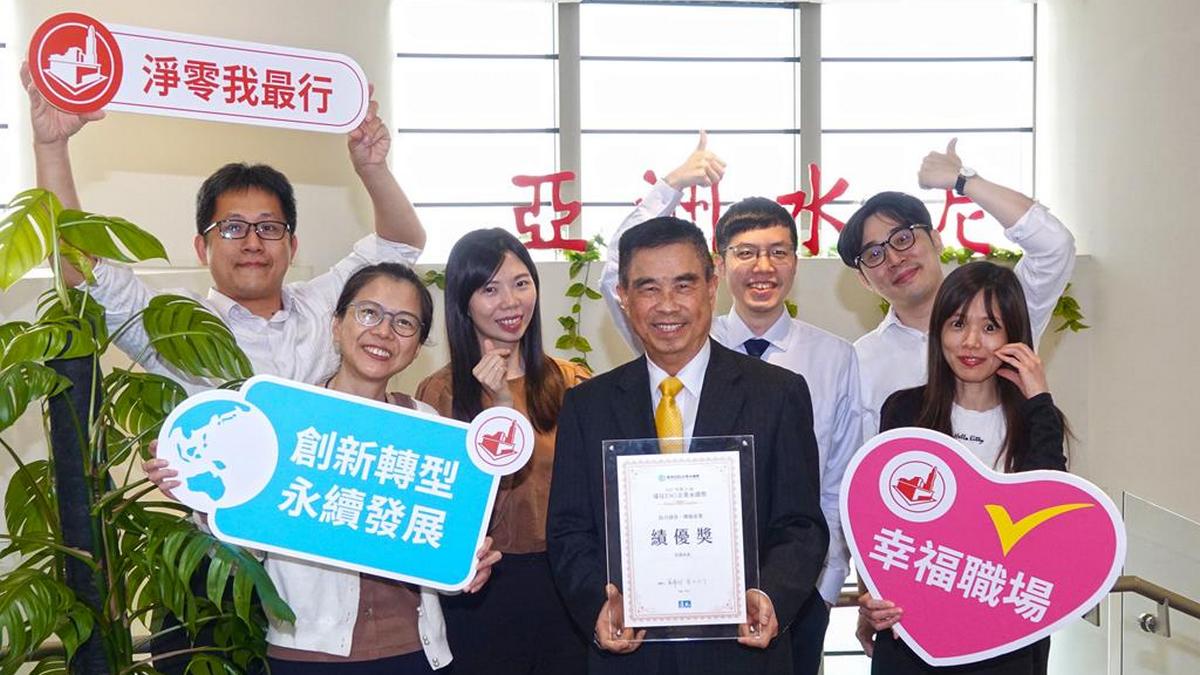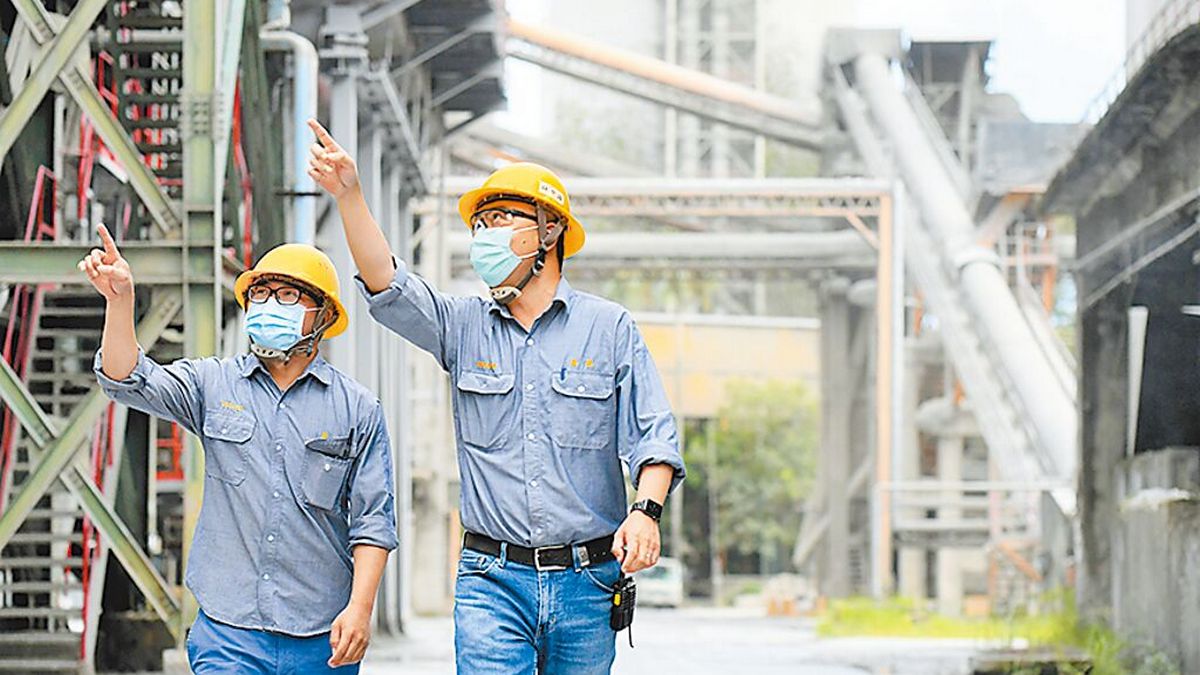ACCC Makes Full Use of Green Power to Promote Waste Free Cities
The proposal of the "30 ・ 60" goal of carbon peak and carbon neutrality not only announced the important strategy of Mainland China to deal with climate change, but also set off a new wave of green revolution in the industry. As the infrastructure industry supporting economic development, the cement industry is also a large traditional energy consumer, which naturally bears the brunt. However, for Asia Cement Corporation (China) [ACCC], which has been working hard in the field of green transformation for many years, this is not only a challenge, but also an opportunity. Let's see how it can steadily move forward in the new era of low carbon with firm steps.
Optimizing Low Carbon Production in Manufacturing Process
The ecological farm with fragrant fruits and vegetables, the five-star greenhouse and nursery, and the bird garden with birds’ chirping... When you come to the picturesque Jiangxi Yadong Cement, you can hardly believe that this is a cement plant that has been put into operation for more than 20 years.
In fact, not just Jiangxi Yadong Cement, but all cement plants under the jurisdiction of ACCC are known as garden plants. Behind the greenery of the garden is the demonstration of ACCC 's concept of "industrial development and environmental protection go hand in hand". After all, flowers, trees, butterflies and birds can never live in the dust.
Since its establishment, ACCC has been committed to producing low-carbon and green cement. In order to reduce carbon emissions, Nanchang Ya Dong has transformed the coal hot blast furnace into a natural gas hot blast furnace, saving 14,000 tons of coal and reducing 27,500 tons of CO2 emissions annually. Each factory has also upgraded the electrostatic precipitator to a bag precipitator, limiting the emission of flue gas dust to less than 10mg/Nm3, and adopting methods of hot raw materials desulfurization, wet desulfurization, hydrated lime desulfurization and other ways to reduce sulfur dioxide emissions. At the same time, low nitrogen combustion technology, combined with SNCR denitration, double closed-loop precise ammonia injection and SCR denitration, are used to reduce nitrogen oxide (NOx) emissions; At present, the air pollutant emission value of each plant is far lower than the limit value of the local government. In particular, Sichuan Ya Dong No. 2 Kiln and Sichuan Lanfeng No. 2 Kiln are the first ones to reach the Class A air pollutant emission standard. It is expected that all the integrated cement plants under ACCC will meet the standard in 2025.
In addition, each factory also continues to optimize the production technology and improve the manufacturing process, such as improving the design of some raw fuel storage yards, jigging fans, adjusting baffles, etc., to effectively improve the grinding efficiency and heat exchange effect in the clinker burning process; All kinds of cement products can maintain excellent quality stability with the improvement of the compressive strength of clinker and the strengthening and grinding enhancement of cement grinding aids specially made by Hubei Ya Dong. Now, all cement plants are working hard to develop the best clinker ratio in all types of cement, so that all products can obtain low-carbon product certification.
In terms of energy system, after the completion of the energy management system of ACCC, it is estimated that 19.09 million kilowatt hours of electricity will be saved each year and 11,646.8 tons of CO2 emissions will be reduced; In the future, it will promote the construction of photovoltaic power generation projects with an annual installation capacity of 1.2MW. The goal is to reach 10.8MW installation capacity by 2030, which is expected to save 1.13 million kilowatt hours of electricity consumption and reduce 689.8 tons of CO2 emissions annually.
Of course, the "carbon footprint" is also a crucial part of the carbon reduction measures. How to efficiently and safely transport the mined limestone from the mine to the plant is a big test for the design team. Taking Sichuan Ya Dong as an example, considering that the working height of the limestone mining area is more than 1,200 meters above sea level, and the height difference between the limestone mining area and the destination rock depot at the foot of the mountain is up to 600 meters, the team has used the terrain characteristics to build a long-distance downhill power generation belt conveyor, which can reduce 4,685.6 tons of CO2 emissions annually; Jiangxi Yadong Cement also adopts domestic downhill energy-saving power generation belt conveyor, and adds return belt turnover device to ensure no leakage along the line, which can reduce 658.9 tons of CO2 emissions per year. The clinker produced by each factory must also be shipped to the wharf outside the docking mine and the plant area. Especially for Jiangxi Yadong Cement, 2.7 million tons of clinker produced by the second factory needs to be transported to the wharf of the first factory 3 kilometers away for shipment every year, and 1.4 million tons of raw materials need to be transported from the wharf to the second factory. If vehicles are used for loading and unloading, dust will inevitably rise and oil will be consumed. The team specially designed a new two-way curved conveyor, It can save 2.46 million kilowatt hours of electricity every year, reduce 1,501.2 tons of CO2 emissions, and achieve clean production without raising dust and noise during transportation.
Recycle Waste into Treasure
In addition to carrying out energy conservation and emission reduction measures, ACCC also tries to use various resources to achieve the best effect of waste reduction. For example, Jiangxi Yadong Cement and Huanggang Ya Dong use high magnesium limestone that cannot be used as cement raw material to produce building aggregates. The powder produced in the process is used for cement batching to achieve full utilization of waste rock. In 2021, Jiangxi Ya Dong produced about 2.79 million tons of building aggregates with high-magnesium limestone, utilized 1 million tons of topsoil and recycled 600,000 tons of water resources from its four-level sedimentation tank. The amount of waste rock used accounted for 17.88% of total resource utilization; In 2021, Huanggang Ya Dong used 2.87 million tons of resources, including 0.45 million tons of limestone for cement (high-magnesium waste rock, Maokou formation, interlayer soil, interlayer stone, surface soil, fissure soil) and 1.31 million tons of high-magnesium waste rock for side materials. The amount of waste rock used accounted for 47.73% of total resource utilization.
On the one hand, waste materials in the plant can be used flexibly. On the other hand, ACCC also uses the characteristics of high temperature, alkalinity, and large capacity of cement kilns to assist local governments and industries in dealing with solid waste. The high temperature in the kilns can effectively remove toxic substances and avoid harm to the environment. In 2021, it assisted in the treatment of about 70,000 tons of solid waste generated from paper industry waste, municipal sludge, waste limestone powder, drilling cuttings, etc. In the second half of 2022, it has expanded to solid, liquid, semi-solid industrial hazardous waste, and will further dispose of heavy metal contaminated soil in the future to help the national green development strategy.
Not only to assist in waste disposal, ACCC aims to convert all combustible wastes into alternative fuels, improve the coal substitution rate and combustion efficiency of cement kilns, and truly achieve the goal of "turning solid wastes into gold". At present, all plants are making efforts to explore and research the cement kiln feeding system and pretreatment system, seeking more diversified treatment methods, and achieving the goal of 10% coal substitution rate by 2025.
In view of the annual discharge of about 70 million tons of phosphogypsum industrial waste in Mainland China and its content of phosphorus, organic substances and acidic substances seriously affect the water quality and damage the environment. ACCC is actively developing the harmless process of phosphogypsum, and fully applying it to cement production as a retarder. 506,000 tons of phosphogypsum were used in 2021, and 292,000 tons of phosphogypsum were used in the first half of 2022. While reducing the cost of cement production, it also helps local governments to remove the mountains of phosphogypsum.

Green Certification and Quality Assurance
In order to actively build a green mine, ACCC has worked out a green mine construction and implementation plan in accordance with the characteristics of each mine from six aspects: mining environments, resource development, integrated resource utilization, energy saving, emission reduction, technological innovation, digital mining, and corporate image. Three mines of Jiangxi Yadong Cement and Huanggang Ya Dong were selected as national green mines respectively. In 2021, Jiangxi Yadong Cement declared two more mines as provincial green mines.
In addition, the products of ready mixed concrete manufacturers under the jurisdiction of ACCC are also highly recognized. Taking Wuhan Yali Concrete Production Cement Products as an example, more than 90% of the products have been certified as green building materials with concrete label C20, C25, C30, C35 and C40. As the government requests that the products published on the rural activity online marketing platform must obtain the green building materials product certification, which will accelerate the promotion and application of such building materials. In the future, as the goal of reaching the carbon peak at each stage is approaching, continuing to pursue top level certification will become an important means for ACCC to maintain its advantages.
The cement industry has always been the infrastructure industry supporting the national economy, and also an important adhesive for modern urban buildings. With the continuous evolution of human civilization and the rise of environmental protection, people from all walks of life have higher expectations for it. ACCC, as an industry benchmark, is certainly duty bound. It will reshape the relationship between industry and city through the development of green production and become an important force to promote waste free cities.

Business and Company
News Type
UN SDG
Share
Download
Source
FE Magazine 2022/09










